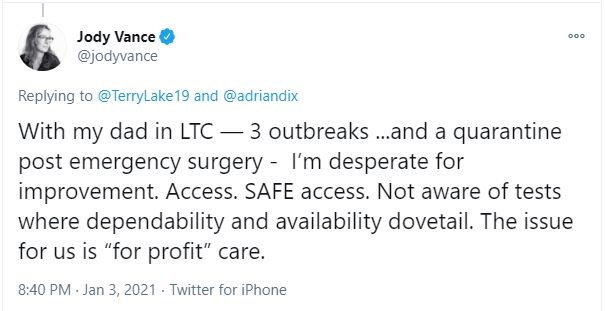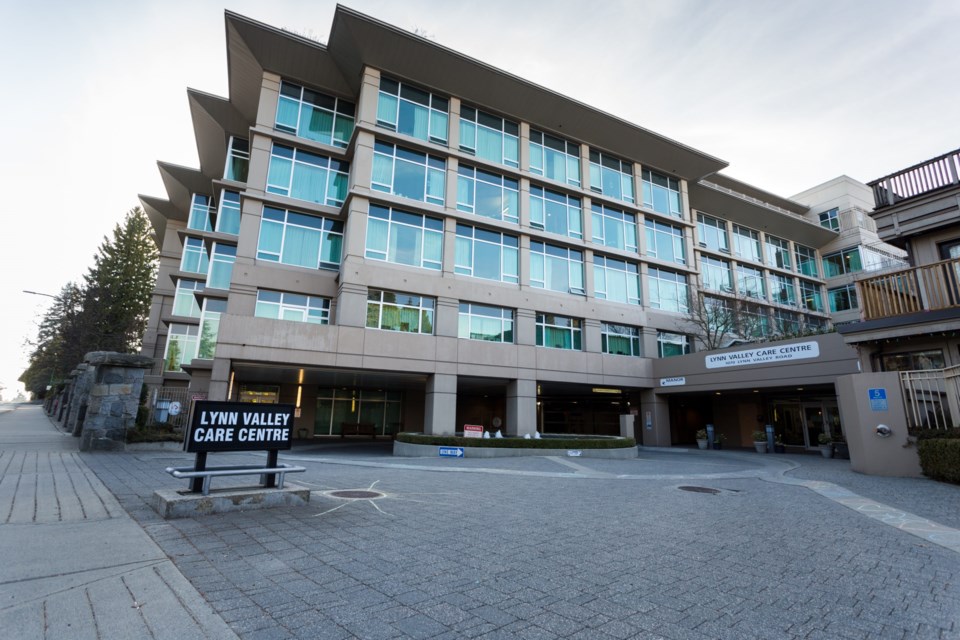Social media is often more boxing ring of opinion than a destination for clarification. Yet this week, my rather flippant tweet about frustrations associated with costs associated with long-term care homes actually lead an informative discussion.

My specific tweet is posted above, but with context, the question was essentially: “why are private MRI clinics are allowed in BC, but for-profit long-term care homes are?” This frustration stems from watching a good friend struggle to care for an elder with dementia, no money to pay for care, and a mile-long waitlist for a subsidized bed.
Enter longtime politician, now CEO of BC Care Providers (BCCP) Terry Lake, who replied via tweet. It started a back-and-forth by DMs and ultimately to a phone interview.
“It’s a Byzantine system,” is where Lake started.
He’s right. You’d need to work really hard to make the current system more complicated and maxed out.
We discussed only a handful of the complexities as to why there are private/pay/for profit homes, not-for-profit and government facilities all within the same public health service.
“It is more than simply public health services at play, that’s only part of care homes. The medical care is free – what costs is the hospitality piece. The room and board, the 3.36 hours per day of non-medical support.”
He went on to share how demand outweighs space, and government dollars simply cannot subsidize to the level of demand.
"The mission is to save people. As many as possible."
“That is reflected in a recent study that shows wait times for spaces are up by 27%, year-over-year.”
We discussed how COVID-19 has glaringly exposed vulnerabilities and outright failures within the industry. Long before the pandemic, long-term care homes were underfunded, understaffed, and fell far too low on the priority list.
“Senior care historically had to compete for government budget support, competing in communities with other needs or wants on the table - hospitals, clinics, community centres, and so on,” explained Lake.
We went on to unpack quite a lot: how expensive it is for families to secure care; how each health authority has their own assessment process for subsidized government dollars; and how this fractured system makes life so much more difficult. All things we must address in the months and years to come – but in the here and now while vaccinations roll out, the mission is to save people.
As many as possible.
As we inch painfully slowly towards vaccination and community immunity, we ponder a Middle that might see rapid testing expand to care home workers.
“The federal government has paid for, and shipped, 100,000 Panbio Ag Rapid tests to BC – and they are sitting in storage. They’ve long been used in the US at care homes, to test staff two or three times a week, and these would certainly help identify possible asymptomatic COVID-19 carriers,” explains Lake.
Having heard the rapid test question posed to Dr. Bonnie Henry about 100 times out of 163 briefing sessions (to date), the answer has been: “they can be unreliable,” give a false sense of security or are tough to secure and can be costly.
"The federal government has paid for, and shipped, 100,000 Panbio Ag Rapid tests to BC – and they are sitting in storage."
To my ears, this sort of sounds like the early pushback on mask mandates.
From the BCCP perspective, rapid these tests literally can’t hurt, if used properly, as an add-on to screening and safeguards already in place.
If there might be a way to level this long-term care emotional roller coaster – even just a bit – it would be worth it.
Jody Vance is a born and raised Vancouverite who’s spent 30 years in both local and national media. The first woman in the history of Canadian TV to host her own sports show in primetime, since 2011 she’s been working in both TV and radio covering news and current affairs.
SWIM ON:
- Just before the holidays, Jody Vance shared that she needed help - and if she can ask for it, so can you.
- Rapid testing came up in Maclean Kay's year-end interview with interim BC Liberal leader Shirley Bond.
- Daniel Marshall's two-part series on two early expeditions to find gold is not to be missed.



